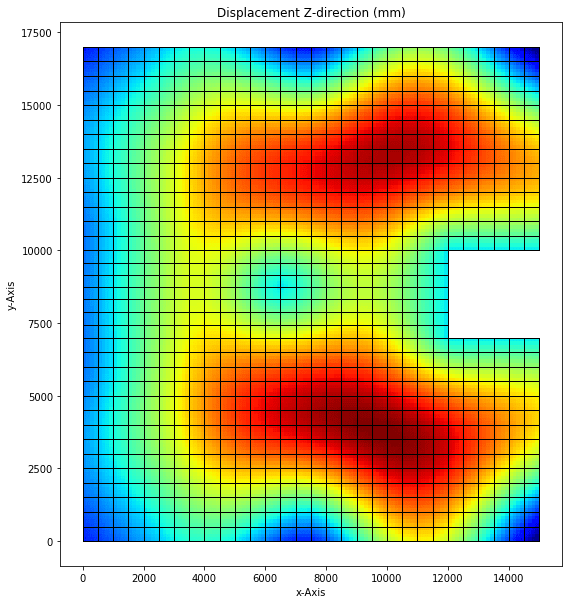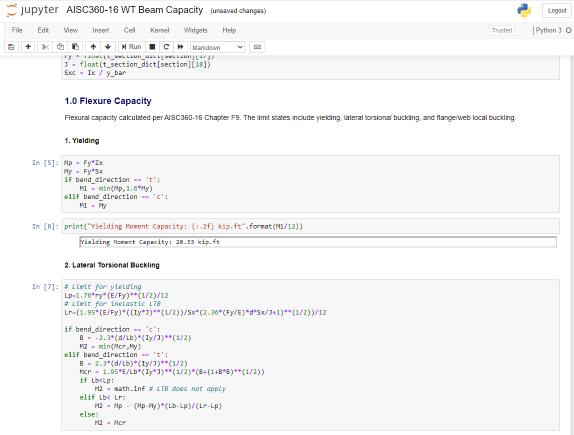I wonder if any Structural Engineers/Designers use software tools developed by them by coding instead of relying on calculations made in Mathcad (Prime or otherwise), or Maple (Maplesoft), etc.
I ran accross this book (Python for Civil and Structural Engineers - and it ignited my interest in the possibility of actually coding all my software tool kit in order to be independent of licensing fees and of compatibility issues (like the ones documented around these forums too) that can result in loss of these assets. It's promising in that, combined with a framework named Jupyter Notebook, it offers a page-format interface that allows for explanation of the process and documentation of the programmed routines, etc, much like you'd be able to do in Mathcad/SMath.
It seems that perhaps this approach would imply the ability to do more powerful programming but without the built-in mathematical methods that the third party software has, although it seems there are add-ons (like NumPy) that could help with this issue; with other modules, this extends to graphical representation and other funcionality that is missing from a pure-coding approach.
I'm currently re-freshing all my structural analyses from scratch (I've been using SMath for that purpose), so I'm not sure I have all the visibility I'd need to be able to know whether doing this (coding everything in Python instead of relying on a third party software) is a hole I want to get into that I will get out of with something good, or wether it's just going to keep me coding rather than doing analysis/design.
I know there's an engineering software room in the forum, but I though that it'd be better if I sought direct feedback from the structural fellows. Thanks in advance.
I ran accross this book (Python for Civil and Structural Engineers - and it ignited my interest in the possibility of actually coding all my software tool kit in order to be independent of licensing fees and of compatibility issues (like the ones documented around these forums too) that can result in loss of these assets. It's promising in that, combined with a framework named Jupyter Notebook, it offers a page-format interface that allows for explanation of the process and documentation of the programmed routines, etc, much like you'd be able to do in Mathcad/SMath.
It seems that perhaps this approach would imply the ability to do more powerful programming but without the built-in mathematical methods that the third party software has, although it seems there are add-ons (like NumPy) that could help with this issue; with other modules, this extends to graphical representation and other funcionality that is missing from a pure-coding approach.
I'm currently re-freshing all my structural analyses from scratch (I've been using SMath for that purpose), so I'm not sure I have all the visibility I'd need to be able to know whether doing this (coding everything in Python instead of relying on a third party software) is a hole I want to get into that I will get out of with something good, or wether it's just going to keep me coding rather than doing analysis/design.
I know there's an engineering software room in the forum, but I though that it'd be better if I sought direct feedback from the structural fellows. Thanks in advance.


